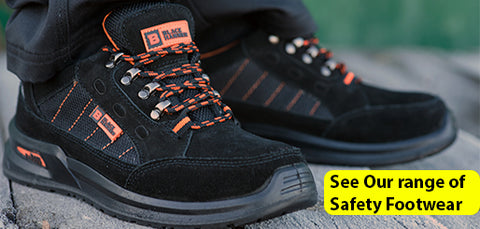
When buying any kind of footwear, style and comfort are always important factors to consider. When buying safety footwear, though, you’re buying it for a very specific reason – to protect your feet and reduce the risk of injury or accident in potentially hazardous conditions. So, the safety features of the shoes are an additional factor you need to consider.
Manufacturers and retailers label their safety footwear with a range of codes and acronyms. Those are there to let the customer know what safety features each pair of safety shoe or boot has. But if you don’t know what those labels mean, then it’s not particularly useful.
To help you out, we’ve got a rundown of the different labels you might see attached to safety footwear.

This mouthful sets out all the standards that safety footwear must adhere to across Europe, plus any other standards that are optional extras. These standards are developed by the International Organization for Standardization (ISO). EN ISO 20345:2011 specifies that all safety footwear must have toe protection that can withstand impacts up to 200 joules.

As well as providing toe protection, Safety Boots Mens, shoes, and Safety Trainers Mens can also have a range of other features to help protect the wearer. If you’ve seen any of the following initials when shopping for safety footwear, here’s what they mean:
- ORO – Oil resistant outer sole
- A – Anti-static footwear
- E – Energy absorption in the heel region
- WRU – Water resistant upper
- P – Penetration resistance (steel insole)
- WR – Water resistant footwear
- M – Foot arch protection footwear
- CI – Cold insulation
- HI – Heat insulation
- HRO – Heat resistance of outer sole
- C – Conductive
- I – Electricity insulating footwear
- AN – Ankle protection
- CR – Cut resistant upper


